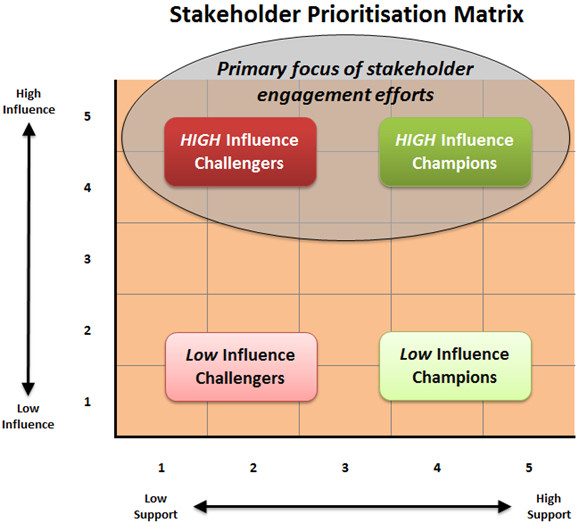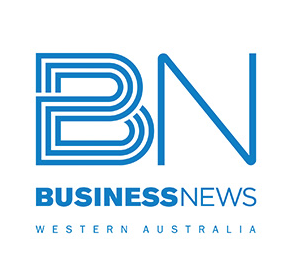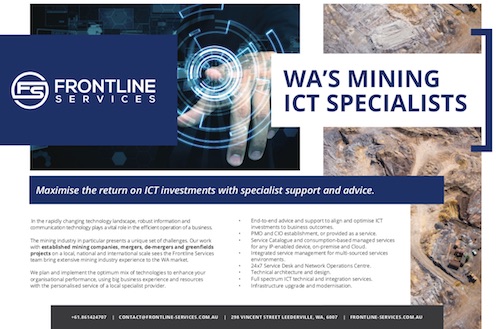Implementing a Project Portfolio Management (PPM) solution into your organisation is a BIG DEAL – and like with most big deals, the rewards can be vast, but so can all of the various pitfalls you need to avoid before getting there.
If you are new to PPM, or already have a PPM process and are considering implementing a supporting PPM tool, here’s a list of 9 costly Project Portfolio Management implementation mistakes you should avoid making.
Let’s get right into them:
Mistake 1:
Confusing PPM with technology solutions or other concepts
If you are new to PPM, don’t make the mistake of assuming that by going out and getting a PPM solution from a vendor, that you will be able to do PPM out the box across your organisation.
It’s important to understand the difference between having a PPM Process that enables you to determine which projects should be in your portfolio vs. having a PPM Software System to make managing the processes and projects easier.
Having a tool in place that is capable of doing PPM – does not translate to your organisation actually performing PPM.
Another misconception is that PPM is just the management of projects in itself. There’s a whole bunch of processes, governance, and other stuff you need to do before even being able to perform basic PPM in any meaningful way.
Project Portfolio Management or “PPM” is a set of practices, processes and governance that brings projects into tight integration with business operations, by aligning projects to business strategy and business objectives.
If you are considering implementing PPM within your organisation for the first time, a really good read is: Project Portfolio Management: A Practical Guide to Selecting Projects, Managing Portfolios, and Maximizing Benefits by Harvey A. Levine.
Mistake 2:
Being foggy about the Business Drivers
Being even a little foggy on what your PPM drivers are, is a recipe for disaster further down the road.

You need to have a crystal clear understanding of exactly what is driving your business to adopt a PPM solution. This core understanding is the seed that will spout new processes, organisational change, reprioritisation of work, shift capital budgets, create new roles and responsibilities etc.
This core understanding will also keep you and your team focused and grounded on delivering the required primary requirements and functionality of the PPM solution that the business expects, rather than start focusing on secondary aspects that won’t add much value.
Questions that need to be asked are:
- What are the primary business drivers for the adoption of a PPM solution?
- What are the primary benefits that the business expects?
- What’s the vision of PPM within the organisation?
Be sure to continually communicate and reiterate these both to your team members and stakeholders to help ensure continued alignment throughout the implementation.
Some of your business drivers for a PPM system may be as follows:
- Ability to prioritise projects based on business requirements
- Improve resource and capacity optimisation
- Increase strategy execution and alignment
- Better leverage of opportunities
- More accurate financial tracking of projects and portfolios
- Increase visibility and accountability
Key benefits the business may expect are as follows:
- Increased profits / cost savings
- Improved allocation of resources
- Working on the right projects
- Spending in the right areas
- Quicker reaction to business opportunities
- Better aligning projects to strategy
- Reduction in the number of poor projects
Mistake 3:
Lack of C-Level Support
If you are implementing an IT PPM Solution, you need 100% of the CIO’s support. If your scope is across various business units or across all of the business, you need 100% CEO’s support along with the other top executives, with support and backing filtering down.
PICTURE THIS – You have been tasked with implementing a small PPM solution across some of the organisations business units. It’s not a very large implementation with respect to user numbers. The primary business driver is to improved resource utilisation across the organisation. Sounds easy?
Ok, here is a translation of how some of those business units may interpret PPM in an adverse way:
- Improved resource utilisation means we will now have to compete for resources to get the job done, my budget may be cut and there may even be potential job losses 🙁
- Time and effort to learn something new 🙁
- Having to deal with all the complexities and issues of instituting new processes 🙁
- Extra ongoing work to input quality data into the system for resources that are already stretched 🙁
Don’t underestimate the level of change that an adoption of a PPM system can bring to an organisation and the backing and support you will need time and time again to help overcome resistance to change and potentially a new way to do things.
PPM is an initiative that must start from the top in order to be successful.
Mistake 4:
Having weak PPM Processes
Without any strong PPM processes, managing any portfolio of projects – even in a basic sense – will prove difficult and frustrating if not impossible.

A considerable amount of thought and effort should be put into formulating processes that suit your organisation and its culture to maximise the benefits of your PPM implementation.
Here are some steps you can take to start defining or strengthening some of the processes your PPM implementation will need.
STEP 1 – Vision
A good place to start is with the vision – what’s the vision of PPM within the organisation? If you don’t know where you want to ultimately get to, what hope do you have of actually getting there? Make sure you don’t confuse “vision vs mission” like I sometimes do.
STEP 2 – Setting Measurable Objectives
What are the measurable objectives that your organisation has to consider PPM successful? Areas of focus may be around speed, value, governance, etc. – if so, what’s the measure? Consider using the S.M.A.R.T method for creating these objectives.
Creating measurable benefits sets you up to have the ability to determine the effectiveness of your PPM implementation overtime on a measurable basis, as well as determine which areas need improvement.
STEP 3 – Define Process Scope
This step gets into the details of your process. Questions to ask include:
- What’s the scope with respect to types of projects?
- Which business units will be included in the scope?
- Which people will be involved – who owns/uses the process, etc.?
- What information is required and who delivers it?
- What’s the result expected at the end of the process?
STEP 4 – Define the Process
- Work with the relevant stakeholders within each of the business units to best determine how the processes will work
- Create the process diagrams and any relevant documentation
- Obtain necessary sign-off
STEP 5 – Test the process
- Run test cases and scenarios to test the integrity of your processes
- Adjust processes as required
STEP 6 – Deploy
- When testing is complete, you are ready to deploy the process
STEP 7 – Monitor and improve
- Monitor usage and collect key performance indicators to determine how well the processes are meeting the objectives that were defined.
Having a strong PPM process is the lifeblood of successful Project Portfolio Management.
Mistake 5:
Having a Poor Governance
You can’t really perform PPM without any proper governance to back it. To picture it a little easier, consider that the management of a portfolio of projects should be similar to the management of a portfolio of investments.
Would you trust a fund manager that picked investments based on gut-feeling and impulse with your money?
Let’s do a closer comparison:
The goal of the fund manager would be to:
- Select the most profitable portfolio of stocks, bonds, and other investments based on the goals of that particular fund and against ROI potential and risk tolerances.Monitoring of those investments would enable the fund manager to cut losses on poorly performing investments, whilst reallocating capital to those investments that provided greater ROI.
By the same analogy, the goal of your PPM solution is to:
- Select the best set of projects based on the particular goals of the organisation, potential ROI, risk tolerances and other criteriaContinuous monitoring and visibility of the performance of projects would allow the organisation cut losses early, whilst reallocating capital to more profitable initiatives.
So, your PPM governance process needs to define some of the following:
- When are decisions made?
- How is agreement reached?
- Who needs to be involved in decisions?
- How is risk reviewed?
- What other criteria effects decision making?
- How are projects formulated?
- How are projects prioritised?
- How are projects funded?
- Who monitors and tracks project implementation?
Just as you would expect a fund manager to apply a certain level of governance before choosing investments for their portfolio, the same should apply to your portfolio of projects.
Mistake 6:
Purchasing the PPM application tool first
There are a great number of PPM tools that are highly configurable in the sense that you can configure the application to work with your organisations processes – so what’s the problem with purchasing the tool first?
The problem is that different PPM tools and applications from different vendors have different strengths and weaknesses in different areas. Without understanding your requirements, you cannot determine which tool is best to use.
A solution from one vendor may have significant strengths in Project Portfolio Scenario Planning whilst another vendor may have a solution with significant strengths in Financials and Forecasting.
Once you have your requirements and associated process properly defined, you will then be in a much better position to assess which vendor provides the best solution to meet those requirements.
Mistake 7:
Adopting an Imposed-PPM System
Be very cautious about having a PPM tool imposed from internally within the organisation such as from the IT Department, especially if you are implementing PPM across various business units or the entire organisation. It is akin to the previous point of purchasing a PPM application tool first, before even starting the project and considering requirements.
From the position of an IT Department, they would not be doing a good job if they did not put up valid arguments for their PPM tool such as:
- We already have licenses for a PPM tool
- RFPs / RFTs can take months and are very costly to perform, we already have the tool
- The tool is on our roadmap
- Our tool is the most cost effective solution
- It’s part of the application suite that integrates with our key systems such as ERP
- Integrating yet another system will prove very costly
- The tool will, at the very least, meet with all the core requirements
This is one of the cases where the business’s resolve for a successful PPM system will be tested – how can you navigate around this?
One way is to bring it all down to where your business wants to allocate risk:
- Does the business want to increase the risk that the PPM solution will be mediocre and may be a failure – in favour of achieving the advantages of the imposed solution? OR
- Does the business want to increase the risk of not having the advantages of the imposed solution – in favour of increasing the chances that the PPM solution will be embraced and successfully meet business requirements and achieve ROI?
If your business wants to maximise the chances that PPM will be adopted and work within the organisation, then you need to pit your business requirements and associated processes against a host of potential viable tools – including the imposed solution.
You will then be in a good position to determine if the imposed solution is viable to use, or if there is something major that is lacking that warrants using another vendor’s solution.
Mistake 8:
Considering a Big Bang Implementation
Don’t get pressured into believing that a “Big Bang Implementation” will provide you with a successful PPM system that your organisation will love and enjoy.
You cannot expect to have a fully-fledged solution working on par with the efficiency of a well-tuned investment portfolio – implemented across your business over one weekend – it’s unrealistic. Additionally, doing too much too soon can easily overwhelm your organisation and prove too much of a big change to do all at once.
Instead, consider a well phased more agile “CRAWL, WALK, RUN” implementation strategy that focuses on maximising user adoption as well as and achieving some intended benefits.
Your implementation strategy should also take into account where your organisation is with respect to PPM maturity. Have a look at Gartner’s “Five Progressive Levels of the Maturity Model” for PPM and determine a good roadmap for your organisation.
Depending on the size and complexity of your organisation, making the transition from Level 2 to a Level 5 can be a journey that takes a number of years.
Mistake 9:
Forgetting the human element
It’s easy to get so caught up with processes, governance procedures and systems that you forget all about the human element. You can have the best system and processes in place, however it’s all worthless if everyone hates it and no one wants to use it.
DON’T NEGLECT YOUR USERS – they are the other half of the equation that will make your PPM system a success.
Here’s a list of things to watch out for:
- PROCESSES: If you over complicate these, no one will want to use them – keep it simple.
- TECHNOLOGY: User adoption is your best friend – No one likes using systems that are difficult to use and non-intuitive, no matter how smart those systems are or what they can do.
- RESULTS: Don’t go too long without showing any results, both interest and support will wane – no one wants to back something that’s not producing results.
- THEORY: Don’t get too sucked into the theory, people love to see practical application. Seeing is really believing.
- CHANGE: Don’t do too much too quickly – everyone learns how to crawl and walk before they can run.
- TRAIN: Skimping on training translates to people skimping on the system.
- CHAMPION: Nominate local champions – people don’t like going too far for help.
- CULTURE: Design the solution to be the path of least resistance for people – otherwise, they’ll continue using the path of least resistance.
- CONTINUOUS-IMPROVEMENT: No one expects a solution to be perfect from the start – however people get quickly annoyed if nothing is ever done to improve the system.
- SUCCESS: Communicate PPM success within the organisation. Everyone wants to be part of something that’s successful.
Conclusion:
PPM when implemented properly can create immense value to your organisation and although there are many pitfalls and mistakes to be made – what’s important is how you recover and move ahead to reach your goal.
You may also like:- Dealing with Difficult People in Project Management – 8 aspects you may not be considering
About Rick Ktorides, Senior Project Manager

Rick Ktorides is a Senior Project Manager/Consultant who has successfully delivered a wide variety of complex projects across Australia, Asia, Europe and North America to business end-users across various levels and industry verticals.
As Frontline’s Senior Project Manager, Rick offers project management services to our customers across Application, Development and Infrastructure Projects.
Connect via LinkedIn














 In the rapidly changing technology landscape, robust information and communication technology plays a vital role in the efficient operation of a business.
In the rapidly changing technology landscape, robust information and communication technology plays a vital role in the efficient operation of a business.

 Steve is an experienced General Manager with over 35 years’ experience, and a demonstrated history of delivering outcomes. He bring extensive experience to the Frontline Services Executive team, particular in the information technology and services industry, as well as Finance and Oil & Gas. Skilled in Sales
Steve is an experienced General Manager with over 35 years’ experience, and a demonstrated history of delivering outcomes. He bring extensive experience to the Frontline Services Executive team, particular in the information technology and services industry, as well as Finance and Oil & Gas. Skilled in Sales 
